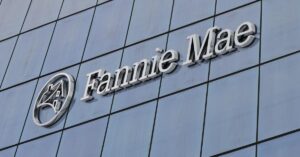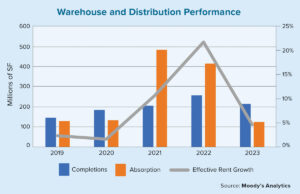The mortgage industry has always been full of ups and downs, but 2020 has been something else entirely. And no segment of the industry has experienced this turbulence as severely as nonagency loans, or mortgages that are securitized and sold to private investors rather than the federal government or the government-sponsored enterprises (GSEs).
Although there’s still plenty of uncertainty ahead, there also are reasons to be excited about the future of the nonagency market. Mortgage originators will want to understand the dynamics that are in play for this important slice of the market.
Stunning free fall
This past February, the energy at the Structured Finance Association’s conference in Las Vegas was intense — enthusiasm was the highest it has been in years. All of the usual nonagency players were there, and there was excitement for the future.
Two weeks later, after the COVID-19 pandemic forced widespread shutdowns, the entire market completely imploded. Many of the players who attended the conference either put their plans on hold or exited the market entirely, including some large lenders. Investor demand for non-agency loans evaporated. Companies could not honor their locks as they had no place else to go with their loans.
At that time, it looked like the industry would be lucky if the nonagency market returned by 2021. A few months later, however, it began stirring back to life. Some older players — but not all — unpaused their businesses while new players emerged with a brand-new channel of business.
By this past summer, things had truly turned around. Fitch Ratings, in a June 2020 report on originators and aggregators, noted an increase in private-label securitization issuances in the week prior to the report’s release. So, what happened?
Doomsday on hold
Despite a deadly global health crisis, the response by local, state and federal governments to keep the economy moving has been comforting to a lot of people. Compared to the situation this past March, Americans saw that the sun would still rise every morning and most people began backing away from a doomsday outlook.
Nonagency lenders, aggregators and issuers were able to use the pause in activity as an opportunity to reevaluate their traditional processes and vendor partnerships while redesigning loan programs. Meanwhile, growing confidence in the economy helped nonagency investors regain their appetite for underserved areas of the market.
Clearly, today’s mortgage market is driven by conventional loans. But there is a growing amount of nonagency activity going on, driven by investor demand for products that are not quite super-jumbo loans — too big for the GSEs but not in the $10 million territory. There also is growth in the fix-and-flip market as nonagency lenders provide borrowers an alternative to the GSEs’ rehab products, which have limitations.
Self-employed borrowers have renewed reason for hope, too. Fannie Mae and Freddie Mac have tightened their belts, for example, making it more difficult for self-employed borrowers to get GSE-backed loans — but they can get nonagency loans. Nonagency lenders consider compensating factors to qualify borrowers who can show they have sufficient ability to repay, and these loans are graded accordingly.
A big reason for the nonagency market’s quick recovery is loan quality. Lenders in the field today are prudent. There’s no excessive risk taking place like what occurred before the 2007-2008 crisis. These are strong, well-underwritten loans. Their guidelines were already well-conceived to begin with, so there was no need to tighten them. The nonagency market was ready for new approaches. The market had been dominated for years by the same handful of players.
Excitement ahead
Although the recovery of the nonagency market is reason for excitement, the rebound can only move so fast. Launching or expanding nonagency channels takes time, and issuers won’t advertise themselves until they’re comfortable that all the mechanics are worked out.
To launch a nonagency business, lenders have to get their products defined and documented, then get warehouse partners on board and lined up. This creates a certain lag time, which means that the period between the decision to launch or relaunch a nonagency channel and the time to actually roll it out could be 60 to 120 days or even longer, depending on the lender.
There are other unknowns that will impact the future of the nonagency market. For one, the fates of Fannie and Freddie are still undecided. At the moment, it’s looking more likely that they will be taken out of conservatorship, but whether they remain government-guaranteed agencies or become private companies remains to be seen. There are reasons to believe they will be privatized — the GSEs have already hired investment bankers and other players are gearing up for the competition.
Then there’s the end of the qualified mortgage (QM) patch, which allows the GSEs to purchase a certain amount of loans that exceed the federal government’s debt-to-income ratio limits. No one knows for sure whether the patch will end next year as planned or not. It will add another wrinkle as roughly one-third of non-QM volume currently going to the GSEs will have to go someplace else.
Finally, there’s the economy. COVID-19 doesn’t seem to be going anywhere and spikes in coronavirus cases are causing concern among economists about the strength of recent job recoveries. For now, the real estate market is showing amazing resilience. Driven largely by rock-bottom mortgage rates, housing demand is strong and home prices are rising. Given what a lot of people thought in March 2020 versus today, things are much different.
In spite of these uncertainties and unknowns, there are reasons to be excited for the future of the nonagency market. The opening of new non-agency channels and the growing number of securitizations aren’t just reasons for optimism. They’re a valuable reminder that there are always opportunities to grow business if you know where to look. ●
Author
-
Paul Anselmo is the CEO and founder of Evolve Mortgage Services, a top provider of outsourced mortgage solutions. He has more than 30 years of experience in the banking and mortgage industries. Previously he served as president, CEO and founder of Mortgage Resource Network (MRN), a business-process outsourcer and technology provider to the mortgage industry. In 2019, Anselmo was honored as a “Lending Luminary” by the Progress in Lending Association.





